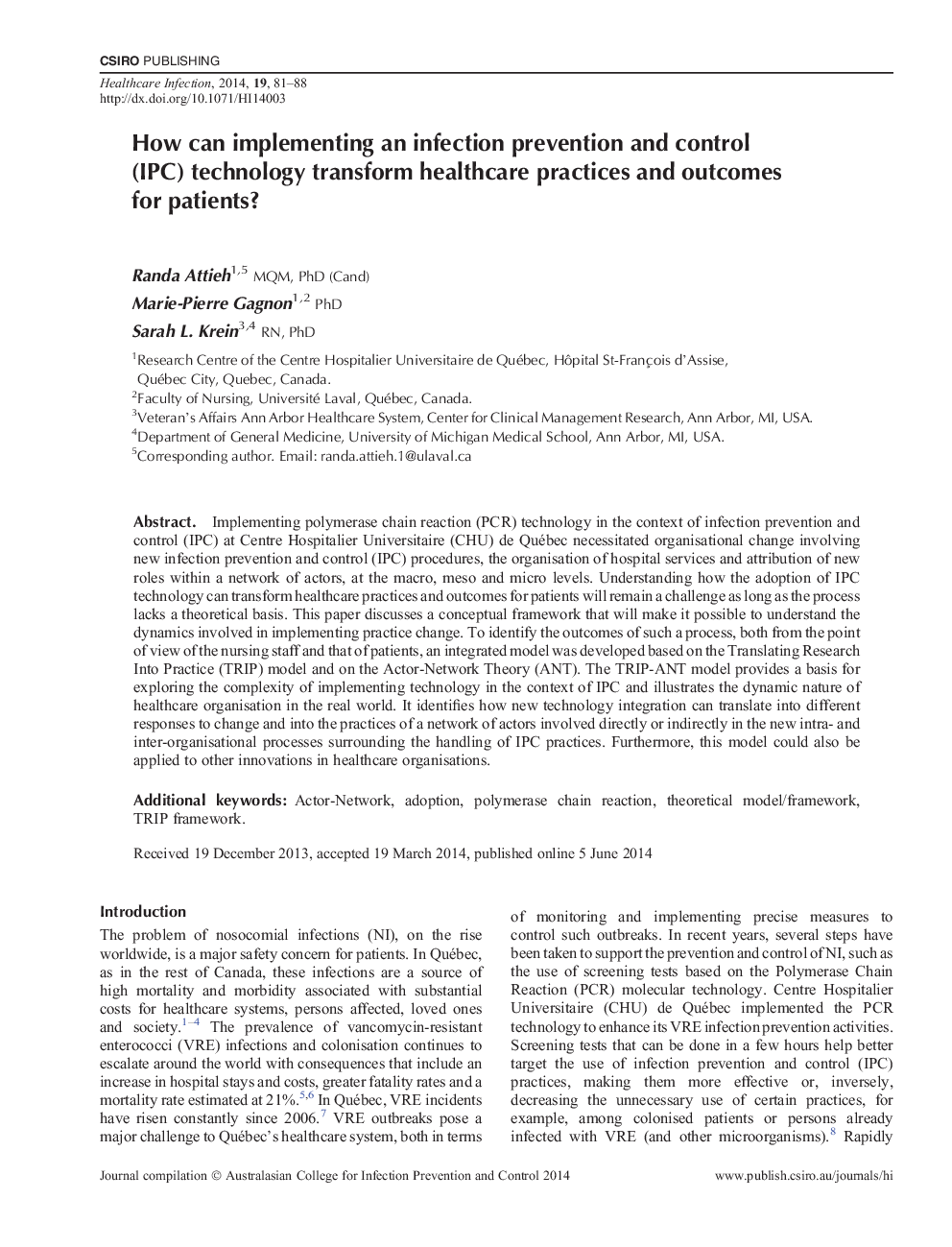| Article ID | Journal | Published Year | Pages | File Type |
|---|---|---|---|---|
| 2679558 | Healthcare infection | 2014 | 8 Pages |
Implementing polymerase chain reaction (PCR) technology in the context of infection prevention and control (IPC) at Centre Hospitalier Universitaire (CHU) de Québec necessitated organisational change involving new infection prevention and control (IPC) procedures, the organisation of hospital services and attribution of new roles within a network of actors, at the macro, meso and micro levels. Understanding how the adoption of IPC technology can transform healthcare practices and outcomes for patients will remain a challenge as long as the process lacks a theoretical basis. This paper discusses a conceptual framework that will make it possible to understand the dynamics involved in implementing practice change. To identify the outcomes of such a process, both from the point of view of the nursing staff and that of patients, an integrated model was developed based on the Translating Research Into Practice (TRIP) model and on the Actor-Network Theory (ANT). The TRIP-ANT model provides a basis for exploring the complexity of implementing technology in the context of IPC and illustrates the dynamic nature of healthcare organisation in the real world. It identifies how new technology integration can translate into different responses to change and into the practices of a network of actors involved directly or indirectly in the new intra- and inter-organisational processes surrounding the handling of IPC practices. Furthermore, this model could also be applied to other innovations in healthcare organisations.
